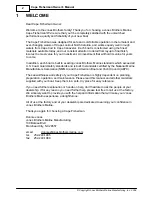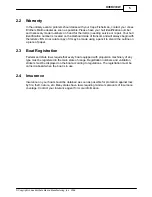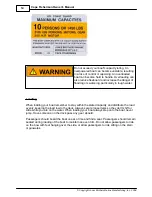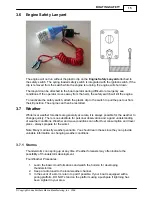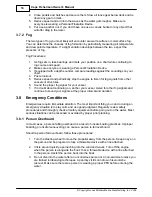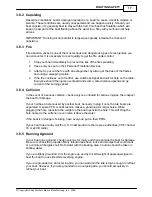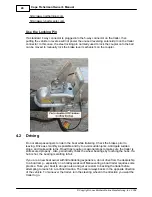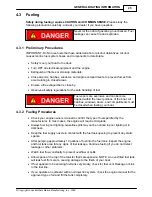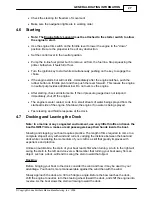
Cape Fisherman Owner's Manual
16
© Copyright Jones Brothers Marine Manufacturing, Inc. 2008
4.
Close portals and hatches and secure them. Stow all loose gear below deck and tie
down any gear on deck.
5.
Reduce speed and turn into the waves as the water gets rougher. Make sure
everyone is wearing a Personal Floatation Device.
6.
Put a sea anchor out. If you don't have one,use a canvas bucket or any object that
will offer drag in the water.
3.7.2 Fog
The two types of fog you most likely will encounter are warm-surface or cold-surface fog.
You can determine the chances of fog formation by periodically measuring air temperature
and dew point temperature. If a slight variation develops between the two, expect the
presence of fog.
Fog Procedures:
1.
As fog sets in, take bearings and mark your position on a chart while continuing to
log course and speed.
2.
Make sure everyone is wearing a Personal Floatation Device.
3.
If equipped with a depth sounder, compare readings against the soundings on your
chart.
4.
Post a lookout.
5.
Reduce speed and periodically stop the engine to listen for fog signals from other
vessels or structures.
6.
Sound the proper fog signal for your vessel.
7.
If in doubt about continuing on, anchor your vessel. Listen for other fog signals and
continue to sound your signals at the proper interval and duration.
3.8
Emergency Conditions
Emergencies require immediate attention. The most important thing you can do during an
emergency situation is to stay calm and use good judgment. Regularly review safety
procedures and thoroughly check all safety equipment before going out on the water. Most
serious situations can be lessened or avoided by proper prior planning.
3.8.1 Person Overboard
In most cases, a person falling overboard is a result of unsafe boating practices. Improper
boarding or unsafe maneuvering can cause a person to fall overboard.
Should a person fall overboard, follow these procedures:
1.
Turn the steering wheel to move the propeller away from the person. Keep an eye on
the person and be prepared to toss a throwable device with a line attached.
2.
Circle around quickly, approaching into the wind and waves. Turn off the engine
when the person is alongside the boat. Toss a throwable device with a line attached
to the person. Assist the person back into the boat.
3.
Do not dive into the water after an unconscious person or a non-swimmer unless you
are trained in lifesaving techniques. A panicky victim can drown his would-be
rescuer. Make sure the rescue person is wearing a proper PFD before entering the
water.
Summary of Contents for Cape Fisherman
Page 1: ...Cape Fisherman Owner s Manual...
Page 6: ......
Page 7: ...WELCOME Part I...
Page 9: ...OVERVIEW Part II...
Page 12: ......
Page 13: ...BOATING SAFETY Part III...
Page 26: ......
Page 27: ...GENERAL BOATING INFORMATION Part IV...
Page 37: ...OPERATION Part V...
Page 55: ...MAINTENANCE AND SERVICE Part VI...

